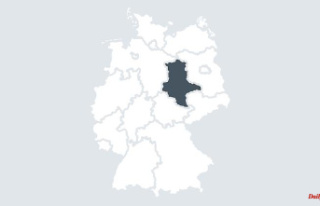Germany is highly dependent: Around 94 percent of the gas required in Germany comes from imports, as the research center Jülich lists in a fact sheet. Only a small part comes from domestic production and an almost infinitesimal part is biogas. And with more than 53 percent, most of the natural gas imports came from Russia, the next largest suppliers were Norway with around 38 percent and the Netherlands with almost nine percent.
The main gas consumers were industry, which required almost half of the gas, followed by households with just over 30 percent. The rest is accounted for by district heating and electricity supply, among other things. The disdainful figures show that a steady supply of gas is urgently needed to keep the country running and warm. However, this is currently endangered by the tensions with the main supplier Russia.
The graphic below shows how much gas flowed to Germany through the pipelines Jamal (Mallnow), Megal (Waidhaus) and Lubmin near Greifswald (Nord Stream 1). By far the largest portion arrives at Greifswald via Nord Stream 1. There was a first big break when the operator Gazprom throttled the transmission for the first time in June. In mid-July, the gas flow came to a standstill again due to maintenance work. After the gas supply was resumed on July 21, Gazprom announced shortly thereafter that it intended to reduce the delivery volume to 20 percent from the end of July. There is a great concern that no gas could run at all in the future.
Also in the Bavarian Waidhaus, after severe throttling, there was hardly any gas, as can be seen. At the Waidhaus transfer point, gas reaches Germany through the Ukraine, among other places. But there is also a north-south connection that brings gas from Nord Stream 1 to Bavaria. Now it is speculated that in the recent past only gas from Nord Stream 1 arrived in Waidhaus. The situation report of the Federal Network Agency said on Thursday: "Although alternative transport routes such as the Yamal pipeline (in Mallnow, editor's note) or the Ukraine route (Waidhaus) are available, they are not used, to compensate for the quantities lost on Nord Stream 1".
The two infographics below show how the gas storage levels are in Germany and Europe. According to the law, the storage facilities in this country should be 80 percent full on October 1st and 90 percent on November 1st. However, in mid-July Germany only achieved around two-thirds of the November target.
According to the Federal Statistical Office, the price monitor above represents an example of the development of consumer prices for the energy products listed. It shows the percentage by which the prices in the respective month were higher or lower than the average for 2015. Prices have recently risen sharply. The head of the Federal Network Agency recently even warned of a possible tripling of gas prices from the coming year.
Sources: DESTATIS, Federal Network Agency, Research Center Jülich
In the gallery: Vladimir Putin has ruled Russia for more than 20 years. A whole generation knows no one else at the head of their country but him. His way to the seemingly eternal president in pictures.












